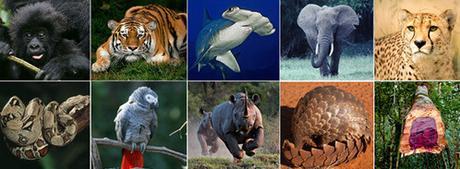
This post includes summary statements on several popular species. I’ve included gray parrots here as an example.
“The Democratic Republic of Congo (DRC) is currently the range State with the largest volume of exports of wild-sourced gray parrots. According to trade records reported by importing countries, DRC has exceeded the annual export quota for various consecutive years. There are no recent scientific studies on the status of the DRC populations of gray parrot, which can provide a science base for the establishment of quotas. There are however suggestions that the populations are declining. Furthermore, there exists an alarmingly high rate of mortality (50% or higher) in domestic transport before the export takes place.
“In the light of the current situation, the Standing Committee is asked to consider a recommendation for all Parties to suspend commercial trade in gray parrots from DRC until all the concerns and recommendations have been sufficiently addressed.” From: cites.org
GR: CITES appears to have no ability to reduce poaching or illegal trafficking in endangered species. The organization follows ponderously behind as popular species are captured or killed for fun, food, and profit. Of course, there have been valuable contributions by CITES, but Earth’s animals and plants are dying so rapidly now that the contributions have little meaning. One might argue that the damage caused by a gathering of 500 participants from across the globe exceeds the value of the organization’s continued existence.
So, what can we do to protect wildlife?
Most people might say that they appreciate wild animals and plants and want them to survive. People have paid for wildlife refuges, landscape linkages, inventories, ecological research, and interventions on behalf of endangered species. However, these conservation efforts have not offset the harm caused by air pollution, construction, invasive species, farming, livestock production, and trafficking. Will we act to increase spending for conservation? Will we act to begin reducing our population? Perhaps both answers are yes, but if we ask if our acts will be sufficient to protect wildlife, the answer is probably no.

